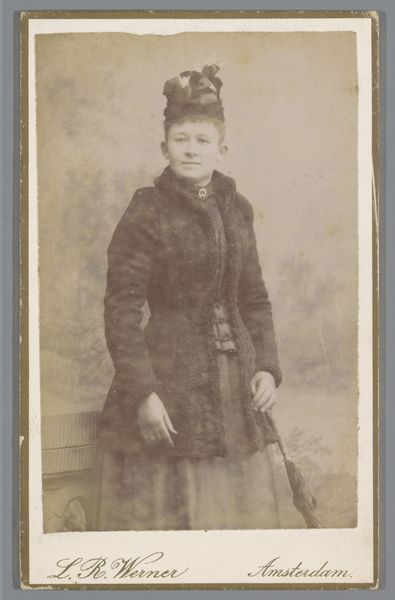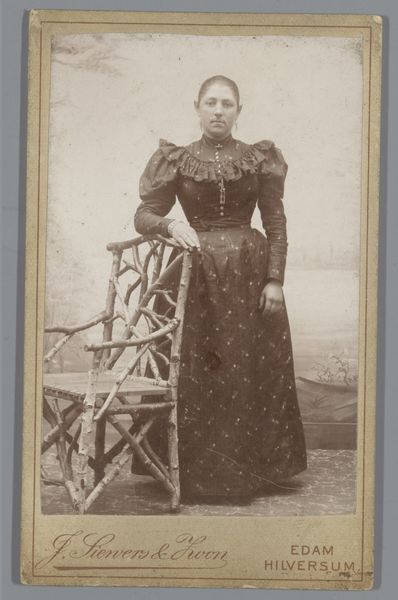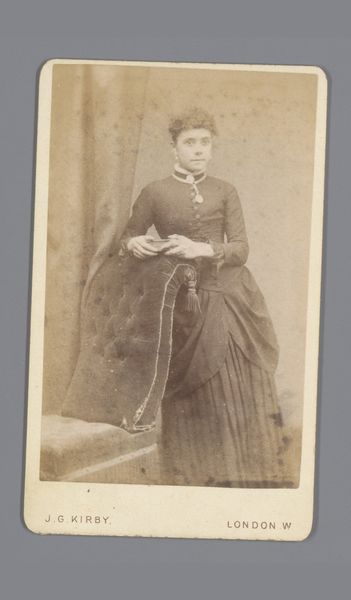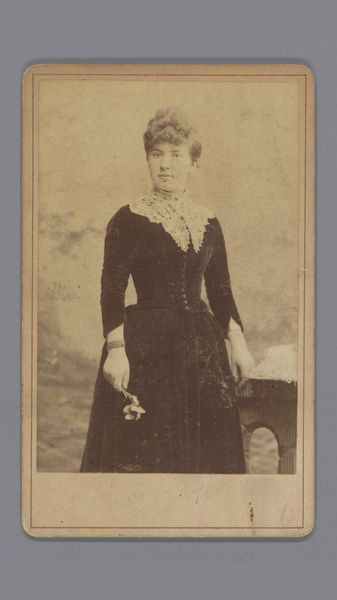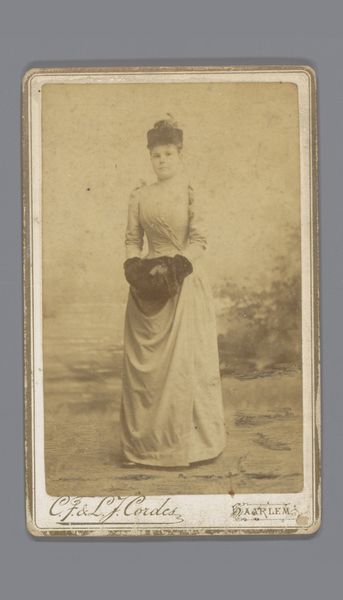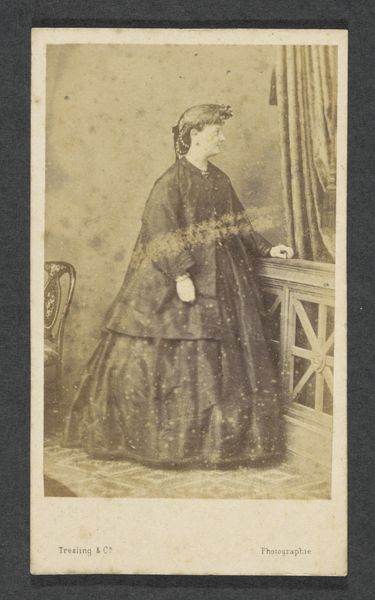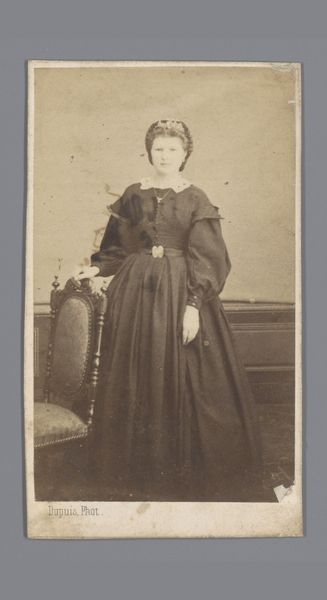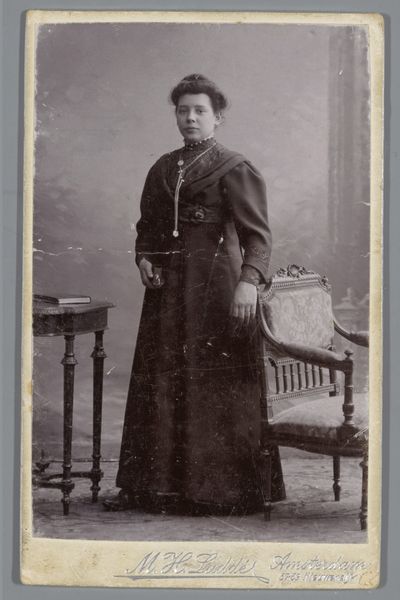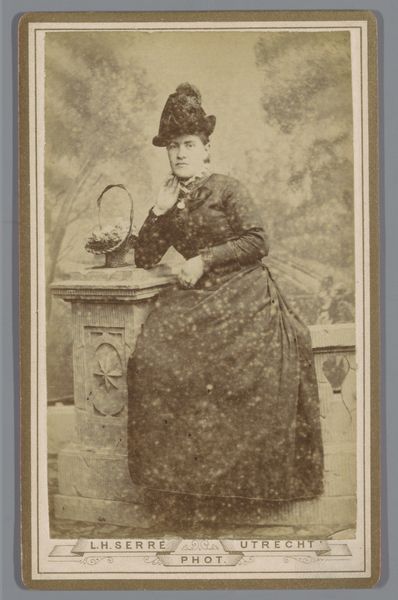
photography, gelatin-silver-print
#
photography
#
framed image
#
gelatin-silver-print
Dimensions: height 98 mm, width 65 mm
Copyright: Rijks Museum: Open Domain
Curator: Let’s discuss this captivating portrait titled "Portret van B. v. Bilderbeek-v.d. Ham" crafted by Louis Robert Werner between 1878 and 1886. Editor: The subdued tonality gives it an intensely nostalgic and almost melancholy aura, wouldn't you say? It also seems to me that she’s formally, symmetrically arranged in the pictorial space of this gelatin-silver print. Curator: Absolutely. Werner’s studio in Amsterdam catered to a bourgeois clientele, so a photograph like this signified middle-class values during that period—emphasizing family, social status, and established norms. Editor: Observe the backdrop though. Those deliberately placed rocks and what looks like a lake. It seems a pastiche meant to create a sense of status through contrived grandeur. Her dress also, the tightly buttoned coat paired with that dark fur hat suggests constriction of a person. Curator: Precisely. Consider, however, that societal expectations placed significant constraints on women during this era, dictating proper conduct, appearance, and roles within the home. It speaks to a lack of agency available at the time, even among those with economic advantages. The image presents a complex tension between portraying ideal womanhood while potentially hinting at societal expectations women faced. Editor: Indeed, if we look closely at the printing and tonal values, a sharp contrast exists between the soft details in her face and the almost illustrational precision given to her dark clothing, giving an impression that identity is deliberately muted to show propriety. Curator: I agree, and think by acknowledging such images, we bring contemporary awareness of gender and societal power dynamics into conversation with the historical art. Editor: The experience of closely looking has provided access to the photograph as an artful object, in addition to appreciating its representational characteristics. Curator: Yes, now we can also see how period photographs present not just aesthetic data, but potent conversations about individuals interacting with society.
Comments
No comments
Be the first to comment and join the conversation on the ultimate creative platform.
